Five Low-Carb “Superfoods”
Cinnamon
This fragrant spice is prized for its strong, distinctive taste and suitability for both sweet and savory dishes. Although research on its ability to improve insulin sensitivity has found mixed results, many people report lower fasting blood glucose levels as a result of taking 1/2 to 1 tsp per day.
Potential benefits:
- Lower postprandial blood glucose levels
- Improved insulin sensitivity
- Decrease in LDL-cholesterol levels
- Improvement in liver function, insulin resistance, and inflammation in those with fatty liver
I like adding cinnamon to coffee and tea with a little half-and-half and sweetener. For an exotic main dish, check out Vanessa of Healthy Living How To’s recipe for Cinnamon Braised Beef.
References:
1. Magistrell A, et al. Effect of ground cinnamon on postprandial blood glucose concentration in normal-weight and obese adults. J Acad Nut Diet 2012 Nov;112(11):1806-9
2. Ascari F, et al. Cinnamon may have therapeutic benefits on lipid profile, liver enzymes, insulin resistance, and high-sensitivity C-reactive protein in nonalcoholic fatty liver disease patients. Nutr Res 2014 Feb;34(2):143-8.
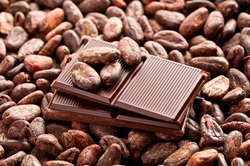
Chocolate has been getting a lot of good press lately. Of course, we’re not talking about Reese’s peanut butter cups and Hershey bars; dark chocolate with at least 85% cacao is the type to choose for maximal health benefits with minimal nonfiber carbs.
Potential benefits:
- Improved gut health due to its prebiotic properties
- Decreased oxidation of LDL cholesterol
- Lower risk of cardiovascular disease
- Protection from sun damage and overall improvement in skin quality
I like unsweetened chocolate, but it’s taken me a while to get to that point. For anyone interested in a low-carb version of one of the most popular candy bars of all time, Carolyn of All Day I Dream About Food has created a sugar-free Chocolate Peanut Butter Cup. And Bill Lagakos of Calories Proper shares an incredibly easy recipe for homemade chocolate at the end of a fantastic blog post about the beneficial effects of chocolate and medium-chain triglycerides on liver health.
References:
1. Tzounis X, et al. Prebiotic evaluation of cocoa-derived flavanols in healthy humans by using a randomized, controlled, double-blind, crossover intervention study. Am J Clin Nutr 2011 Jan; 93(1):62-72 2.West SG, et al. Effects of dark chocolate and cocoa consumption on endothelial function and arterial stiffness in overweight adults. Br J Nutr.2014 Feb;111(4):653-61
3. Ibero-Baraibar I, et al. Oxidized LDL levels decreases after the consumption of ready-to-eat meals supplemented with cocoa extract within a hypo caloric diet Nutr Metab Cardiovasc Dis 2014 Apr; 24(4):416-22
4. Heinrich U, et al. Long-Term Ingestion of High Flavanol Cocoa Provides Photoprotection against UV-Induced Erythema and Improves Skin Condition in Women. J Nutr 2006 Jun;136(6):1565-9
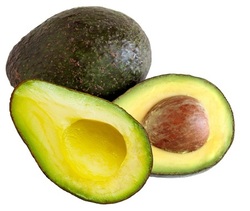
Technically a fruit, the avocado contains high levels of healthy monounsaturated fat, and its carbohydrates come primarily from fiber. In addition, avocados are one of the best sources of potassium around and highly satiating due to their high fat and fiber content.
Potential benefits:
- Reduced blood glucose levels
- Protective effect on liver, kidneys, and pancreas
- Antimicrobial activity that could provide an alternative to antibiotic therapy in the future
- Inhibition of cancer cell growth
Guacamole is my favorite way to eat avocados, but this Paleo-Stuffed Avocado from Martina at KetoDiet App sounds delicious and contains another low-carb “superfood”: sardines.
References:
1. Ezijiofor AN, et al. Hypoglycaemic and tissue-protective effects of the aqueous extract of persea americana seeds on alloxan-induced albino rats. Malays J Med Sci 2013 Oct;20(5):31-9
2.Guzman-Rodriguez JJ, et al. Antibacterial activity of defensin PaDef from avocado fruit (Persea americana var. drymifolia) expressed in endothelial cells against Escherichia coli and Staphylococcus aureus. Biomed Res Int 2013; 2013:986273
3. Ding H, et al. Chemoprotective characteristics of avocado fruit. Semin Cancer Biol 2007 Oct;17(5)386-94
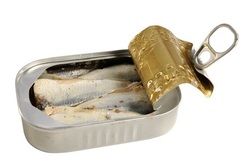
Sardines and herring are generally love-or-hate foods, but those of us who enjoy them definitely have the edge in reaping several health benefits. Their omega-3 fats and low mercury content make them a natural choice for “superfood” status.
Potential benefits:
- More favorable omega-6:omega-3 ratio as a result of high DHA and EPA content
- Reduced risk of cardiovascular disease
- Improvement in bipolar disorder and other forms of depression
- Reduced frequency and size of colonic polyps
Fortunately for me, I love both of these. I usually eat sardines about three times a week for breakfast with cucumbers, cherry tomatoes, olive oil, and vinegar. For a fancier presentation, try these Romaine Wedges with Sardines and Caramelized Onions from the Eating Well website.
Reference:
1.Richard D, et al. Infusion of docosahexaenoic acid protects against myocardial infarction.Prostaglandins Leukot Essent Fatty Acids 2014 Apr;90(4):139-43
2. Grosso G, et al. Omega-3 fatty acids and depression: scientific evidence and biological mechanisms. Oxid Med Cell Longev 2014;2014: 313570
3. Hull MA. Omega-3 polyunsaturated fatty acids. Best Pract Res Clin Gastroenterol 2011 Aug 25(4-5):547-54
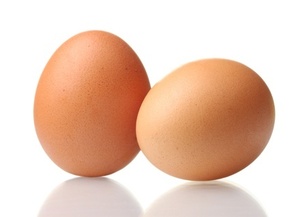
Eggs really are the perfect low-carb choice for any meal. Isn’t it nice that one of the healthiest foods around is also one of the most versatile? Of course, we should all be eating the yolk, its most nutritious part. In addition to containing protein of the highest biological value (meaning our body uses it more efficiently than protein from any other source), eggs keep us healthy in several ways.
Potential benefits:
- Provide important nutrients like choline (vital for the brain), vitamin K2 (for heart and bone health), and the antioxidants lutein and zeaxanthin (keep eyes healthy and free from macular degeneration)
- Raise HDL cholesterol (“good” cholesterol)
- Promote a shift from small, dense atherogenic LDL (Pattern B) to larger LDL (Pattern A)
My favorite way to eat eggs is sunny-side-up over sautéed kale with sea salt. I think they’d also be fantastic in this recipe for Eggs Baked in Tomato Sauce.
References:
1. Nasopoulou C, et al. Hen egg yolk lipid fractions with antiatherogenic properties. Anim Sci J 2013 Mar;84(3):264-71
2. Handelman GJ, et al.Lutein and zeaxanthin concentrations in plasma after dietary supplementation with egg yolk. Am J Clin Nutr 1999 Aug;70(2):247-51
3. Fernandez ML. Effects of eggs on plasma lipoproteins in healthy populations. Food Funct 2010 Nov;1(2):156-60
So while we can argue about whether there truly are any “superfoods,” I think you can see why I feel the foods above should have a prominent role in your diet. Try to get at least a couple in every day.
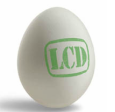
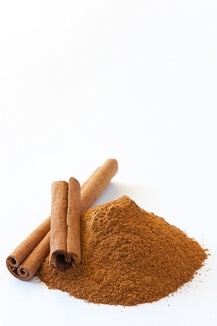
GREAT article and resource. Thank you!!!
What a pleasant surprise to see a comment from you, Kelly! So glad you liked it, and I appreciate the support 🙂
What a wonderful article. It’s nice to know I already eat everything on the list except for sardines. Will have to get some when I get home from the Low Carb Cruise. I actually put cinnamon in the coffee grounds when I brew my coffee. Tastes delicious!
Thanks so much for the nice feedback, Sharon! I’m’ glad you love most of these foods as much as I do. Cinnamon-brewed coffee sounds wonderful! Looking forward to meeting you on the Low Carb Cruise in a few days 🙂
Hi Franziska, thank you for mentioning my recipe! I do have all these quite often but it took me a while to get Nikos to eat avocados 🙂
Hi Martina, I love that recipe! Of course, I love all of your recipes 🙂 Glad Nikos developed a taste for avocados!
I love the presentation of 5 super foods. Not only great pics but succinct info AND references. You have given me some grat meal ideas. I look forward to following your postings.
Thank you so much, Aida! I appreciate your kind feedback and words of support.